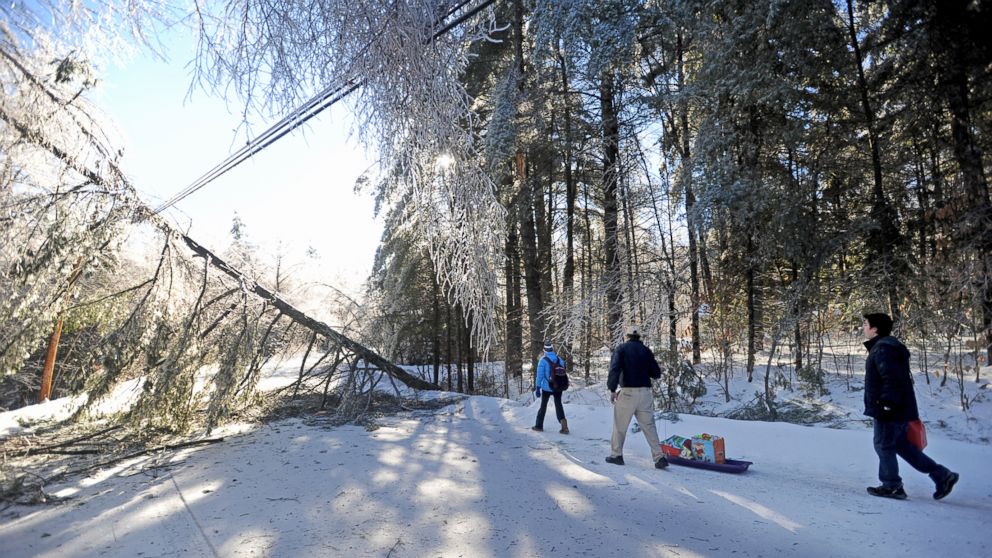Ice Storm Power Outages Lead to Carbon Monoxide Deaths
Thousands are still without power today, dependent on emergency generators.

Dec. 26, 2013 — -- At least eight people have died from carbon monoxide poisoning from their emergency generators after an ice storm walloped parts of the Midwest, the Northeast and Canada.
Thousands of people are still without power today, leaving many dependent on their generators for heat and electricity in their homes.
Authorities blame the storm for 27 deaths; 17 in the U.S. and 10 in Canada. Eight of those deaths are apparently from carbon monoxide poisoning.
Deaths from gasoline fuelled generators, which emit CO gas, are easily preventable, according to Mike Grant, Operations Chief at the Maine Emergency Management Agency.
"It's usually people who have used this stuff [generators] a lot. They are just complacent. They have used it before and it's never become a problem, but it depends on the circumstances," Grant said.
In Maine, where the Central Main Power Company still has 24,540 customers without power, a 50-year-old man died from CO poisoning while refilling his generator in an enclosed outhouse, according to police.
"He might as well had gone in there and placed a masked over his nose and started to breathe pure carbon monoxide, because that's basically what he did," Grant told ABC News. "The family checked on him 15 minutes later and he was already dead, so it doesn't take very long."
Carbon monoxide is an odorless, colorless gas that reduces the blood's ability to carry oxygen to the brain. The brain can only survive for four to six minutes without oxygen before one becomes unconscious or dies, according to Grant.
More than 400 people a year die in the U.S. from accidental carbon monoxide poisoning, according to Centers for Disease Control and Prevention's website.
"Never run a generator, pressure washer, or any gasoline-powered engine inside a basement, garage, or other enclosed structure, even if the doors or windows are open, unless the equipment is professionally installed and vented," according to the CDC.
"Just opening a window or an open door might not be enough because even then it [carbon monoxide] could build up in a nook or cranny of the room," Grant said. "We recommend it [generators] be outside and at least 15 feet away from windows and doors."
In Michigan on Christmas eve, a "58-year-old father, his wife and two children were overcome by carbon monoxide, " Larry Jerue, undersheriff at the Clinton County Sheriff's office told ABC News."They [the family] were found and transported to the hospital, but the husband died."
"This is purely preventable," Jerue said. "People feel that there is protective barrier within the garage, but the fact is that the CO will work its way into the home."
"Some people think, well I don't want the motor exposed to the elements, so I'm going to keep it inside," Jerue said.
People who want to protect their generator from the elements should hang a tarp or tent over the generator, while still having it remain open to the outside and away from enclosed areas, Grant said.
"I've been running a generator in my home and I just put a wheel barrow over it," said Grant. "I certainly would not have brought it inside."